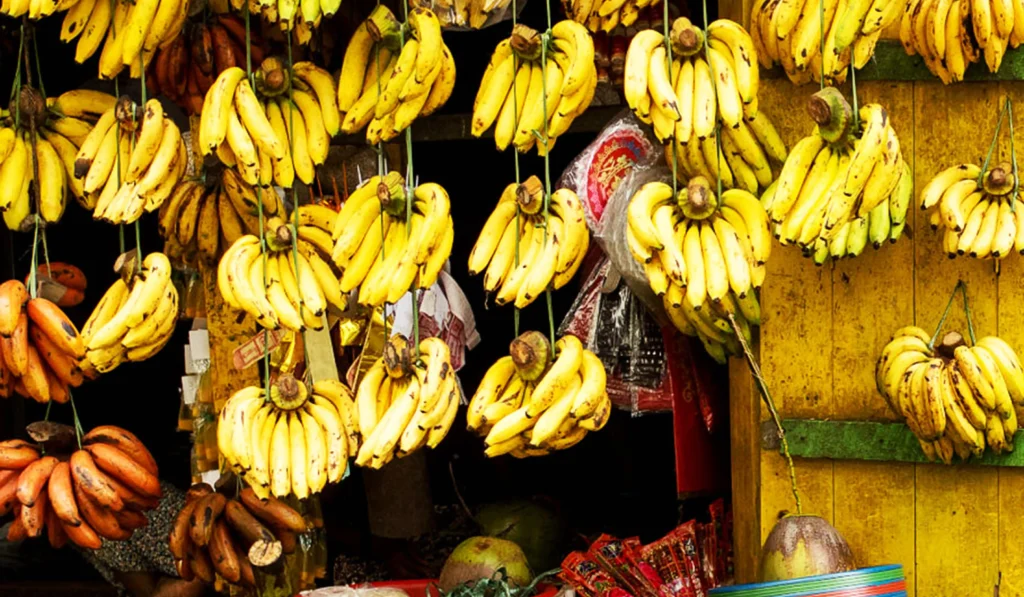Understanding the Difference Between Indian Bananas and Other Bananas
Bananas are one of the most widely consumed fruits in the world, loved for their natural sweetness, nutritional benefits, and versatility. However, not all bananas are the same. Indian bananas hold a unique place in the global banana market due to their distinct varieties, cultivation methods, flavor profiles, and uses. Comparing Indian bananas to other bananas from regions like Latin America, Africa, and Southeast Asia highlights what makes them special and why they are favored in various markets.
Varietal Diversity: The Heart of Indian Bananas
India is one of the world’s largest banana producers and is home to a rich diversity of banana varieties. Unlike many countries where the Cavendish banana dominates exports, India offers a broad spectrum of varieties with unique characteristics:
Robusta: Known for its thick skin, long shelf life, and balanced sweetness, Robusta is the most widely grown variety in India and a major export product.
Yelakki (Elaichi): Often called the “cardamom banana” for its sweet aroma reminiscent of the spice, Yelakki bananas are smaller, highly aromatic, and prized for fresh consumption.
Nendran: Larger and firmer, Nendran bananas are ideal for cooking, frying, and making traditional Indian snacks and desserts like banana chips and halwa.
Red Banana: This variety has reddish-purple skin and a sweeter, creamier flesh with a hint of raspberry flavor, offering a unique taste experience.
Rasthali: A soft-textured, fragrant dessert banana popular in southern India with a delicate sweetness.
In contrast, most bananas exported from Latin America and Africa are predominantly Cavendish, which is favored worldwide for its uniformity, transportability, and long shelf life but generally offers less variety in flavor and texture.
Flavor Profiles and Culinary Uses
Indian bananas are celebrated for their diverse flavor profiles, which range from intensely sweet and aromatic to starchy and robust. This versatility allows Indian bananas to be used in multiple culinary applications:
Fresh Eating: Varieties like Yelakki and Rasthali are sweet, aromatic, and perfect for fresh consumption, often eaten as a snack or dessert.
Cooking and Processing: Nendran and Robusta varieties are commonly used for cooking, frying, and making banana chips or traditional sweets, reflecting the banana’s cultural integration into Indian cuisine.
Medicinal and Nutritional Uses: Some Indian banana varieties are valued in Ayurveda and traditional medicine for their health benefits, including digestive aid and energy provision.
Other regions typically focus on Cavendish bananas mainly for fresh consumption, while plantains (a different type of cooking banana) are used in African and Latin American cuisines for cooking purposes. Indian bananas’ multiple varieties thus offer a unique advantage in meeting diverse consumer needs.
Cultivation Practices and Climate Adaptation
India’s vast and varied climate zones—from tropical south to subtropical north—support the cultivation of many banana varieties. Indian farmers have developed traditional knowledge and methods adapted to specific regional conditions, including organic practices, mixed cropping, and sustainable irrigation.
In contrast, many banana-exporting countries rely on large monoculture plantations focused on Cavendish cultivation for export. This monoculture approach can increase vulnerability to pests and diseases like Panama disease (TR4), whereas India’s varietal diversity and small to medium farm sizes help mitigate these risks and sustain local economies.
Shelf Life and Export Readiness
The export market demands bananas that can withstand long transportation times and maintain quality. Indian banana varieties like Robusta are prized for their thicker skin and longer shelf life, making them competitive for export. However, some highly aromatic Indian varieties like Yelakki and Rasthali are more delicate and generally consumed domestically due to shorter shelf life and transport challenges.
In contrast, Cavendish bananas dominate global export markets because of their robust shelf life, uniform size, and resilience during shipping. This focus on Cavendish has shaped global supply chains but limits the diversity of banana experiences available to consumers worldwide.
Nutritional and Health Aspects
All bananas are nutritious, offering essential vitamins like B6 and C, potassium, dietary fiber, and natural sugars. Indian bananas, especially traditional varieties like Nendran, also provide resistant starch and antioxidants that support digestive health and sustained energy release.
Additionally, the variety in Indian bananas allows for a broader nutritional palette. For example, red bananas have higher levels of beta-carotene and vitamin C compared to the common Cavendish.
Cultural Significance and Market Demand
Bananas play an integral role in Indian culture, religion, and festivals. Certain varieties are preferred for rituals, offerings, and traditional ceremonies, which keeps demand strong within the domestic market.
Globally, the market is evolving with increasing interest in specialty bananas from India due to their unique taste, organic credentials, and heritage status. Exporters are capitalizing on niche markets in Europe, the Middle East, and Southeast Asia where consumers seek diverse fruit experiences beyond the standard Cavendish.
Challenges and Opportunities
Challenges:
Indian bananas face logistical challenges due to their diversity and sensitivity, requiring cold chain investments and efficient handling to reach international markets fresh.
Competition from Cavendish bananas in the global market remains strong due to scale and supply chain maturity.
Limited awareness internationally about Indian banana varieties restricts market penetration.
Opportunities:
Growing global demand for organic, exotic, and specialty fruits offers Indian bananas a chance to capture premium segments.
Leveraging India’s diverse varieties can help build unique brands and stories that attract consumers.
Investment in post-harvest technology and cold chain infrastructure can expand export capabilities.
Collaborations with international retailers and foodservice sectors can raise awareness and increase consumption.
Conclusion
Indian bananas stand out in the global banana trade for their rich varietal diversity, unique flavors, culinary versatility, and cultural significance. While the global market has largely been shaped by the Cavendish banana, India’s bananas offer a refreshing alternative that caters to diverse consumer preferences and niche markets.
For exporters and buyers seeking variety, authenticity, and quality, Indian bananas present exciting opportunities. With improved infrastructure and marketing, Indian bananas can claim a larger share of the global fruit basket, bringing their distinctive taste and heritage to consumers worldwide.


